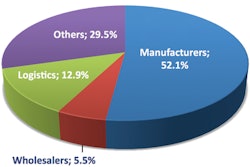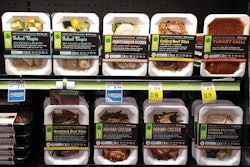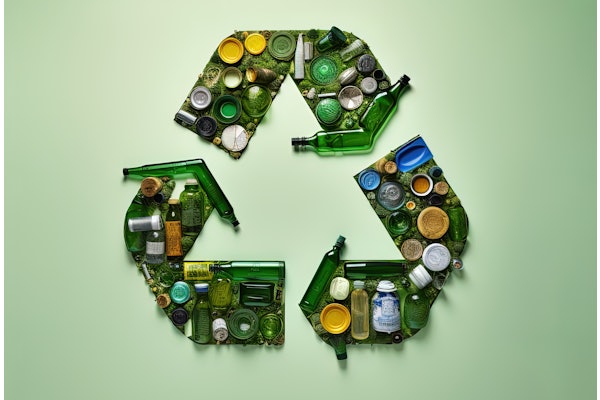
What have you been smoking? is a retort implying that the person being asked has spoken or behaved illogically, as if under the influence of a psychoactive substance. In the foreseeable future, it might become just as common to ask, What have you been eating (or drinking)? The mainstreaming of food and beverages that contain marijuana (or its component, THC) is tied to the trend of the decriminalization of the drug. It started with medical marijuana, ushering in licensed establishments that, in addition to selling the drug itself, also sell a variety of marijuana-infused edibles (hereafter, edibles). In 2012, Colorado and Washington legalized the sale of recreational marijuana to anyone who is at least 21 years of age.
The packaging professional—or, for that matter, anyone associated with consumer packaged goods—should regard the issue beyond a personal opinion about marijuana, in general, and its edibles, in particular. The reason is simple: edibles will increasingly be sold, branded, and packaged. Indeed, edibles will become a case study, demonstrating how trend-setting events can place packaging under scrutiny and make regulation inevitable.
To say that packaging should protect its contents is to cite the obvious. Less obvious but no less true is that packaging also should protect users, especially when the contents are potentially harmful. The most vulnerable are children, because they lack adequate discernment and they are susceptible to certain appeals. Their vulnerability can be exploited by packaging graphics, as we've seen in certain cases in the tobacco and alcohol industries. Even in a category as seemingly harmless and wholesome as breakfast cereal we've seen accusations leveled by crusaders who claim that packaging graphics steer children to sugar-loaded products filled with calories. In light of these developments, it's no wonder that Colorado and Washington are looking at ways to regulate edibles packaging deemed unduly attractive to children. Better to do it now as a preemptive strike, the reasoning goes, before edibles really take off.
But what if there are no appreciable differences in appearance between the packaging of edibles and the packaging of their conventional counterparts? Therein lies another, perhaps more thorny, issue: how to utilize packaging to prevent unintentional ingestion. What marking should adorn the packaging to communicate its marijuana-fueled contents? Whatever is decided, it doesn't address an edible that's been removed from its packaging and left unattended. What's to protect against unintentional consumption under that scenario? It's been suggested that edibles bear a marking (it would make sense to use the same as what's on the packaging). The marking (rendered in food dye?) would be practical even for bite-size products (á la M&M candy).
Unfortunately (or fortunately for those who enjoy challenges), the management of packaging often resembles a game of Whac-A-Mole: bop one problem in the head and another pops up. The aforementioned reference to product size is an example, in that it's connected with dosage and serving size. The amount of drug in a given product correlates to what should be the recommended serving size. For conventional products, information such as dosage and serving size typically is communicated through labeling; however, matters aren't as routinely resolved with edibles. How many bites (not that everyone's bite is the same) from a cookie, brownie, or even a candy bar constitute a serving? Is there a practical way of making those products breakable into serving sizes via markings or perforations? Those and related concerns affect the utility of the labeling (i.e. conveying information that's actionable without undue effort or guessing).
Edibles contain a drug and therefore can result in an overdose, an easily appreciated capability; however, edibles also are foods, and whereas the waistline might suffer from excessive servings of conventional foods, doing so with edibles (again, due to the drug component) can result in an overdose. There's a population that has experience with edibles, whether gained legally or otherwise. Their ranks will increase with an influx of newbies, many of whom incautious, and packaging will be tasked with helping to save them from themselves, a fact that provides a convenient segue into a discussion of warnings.
Conventional drugs, whether prescription or over-the-counter, collectively carry a variety of warnings. To the contrary, no food comes to mind that advises, for example, Do not consume and shortly afterwards operate machinery. A supportable argument can be made for mandating that edibles carry warnings against combining consumption with certain activities; however, how inclusive should those warnings be? Under no circumstances should anyone get stoned on edibles and, say, operate a vehicle; but how might a warning address that, especially given potential delayed effects due to individual differences in which the drug courses through the body? Reputedly, smoking marijuana gives some users a case of the "munchies," slang for a desire to eat; as such, should there be a warning against smoking marijuana and consuming edibles in combination? Returning the discussions to children, would there be an inherent inconsistency, even hypocrisy, to mark edibles packaging with "Keep out of children's reach" when, for all outward appearances, they look like yummy snacks or delicious drinks? Relatedly, what about warnings to pregnant women and nursing mothers?
Just considering the points discussed above (which in no way represents an exhaustive list), the labels on edibles might have to be overcrowded with small print, share duties with in-package leaflets, or go with accordion-style fold-out labels. Those and similar options would complicate the packaging and marketing of edibles. Such likely will sit well with industries that will be competing against edibles. They include tobacco and alcohol because they are consumed for their effects on the body and mind. Coffee and other caffeine-loaded products (think energy drinks) are stimulants and therefore can lose customers to edibles. Nutriceuticals, with their various health claims, had better beware. Conventional drugs shouldn't take edibles for granted and not even conventional foods and beverages should take condescending attitudes regarding edibles as competition. How wisely a company defines itself, as in, We are in the business of _______, has an impact on its ability to recognize competition, especially the non-obvious variety. Strategizing for encroachments from edibles isn't being paranoid (even though marijuana is reputed to trigger that conditon in some).
The growth for edibles can't be predicted with pinpoint-accuracy (few things can); nonetheless, certain indicators make growth a safe bet. The reported tax revenues accruing to Colorado and Washington will incentivize other states to follow suit. As the state count increases, it will be increasingly difficult to ignore that it's occurring in violation of federal law against the recreational sale of marijuana and its edibles. Finally, with the federal government's continued failure to confront states that legalize recreational sales, the Feds likely will become amenable to national legalization, relieved at no longer having to explain why federal law is not trumping state law.
Meanwhile, Colorado, Washington, and other early-adopters, will serve as laboratories, as they hatch out the many packaging-related issues. And anyone involved in that task who says that it will be easy, should be asked, What have you been eating (or drinking)?
____________________________________________________________________________________________________________________________
Sterling Anthony is a consultant, specializing in the strategic use of marketing, logistics, and packaging. His contact information is: 100 Renaissance Center- P.O. Box 43176; Detroit, MI 48243; 313-531-1875 office; 313-531-1972 fax; [email protected]; www.pkgconsultant.com


























